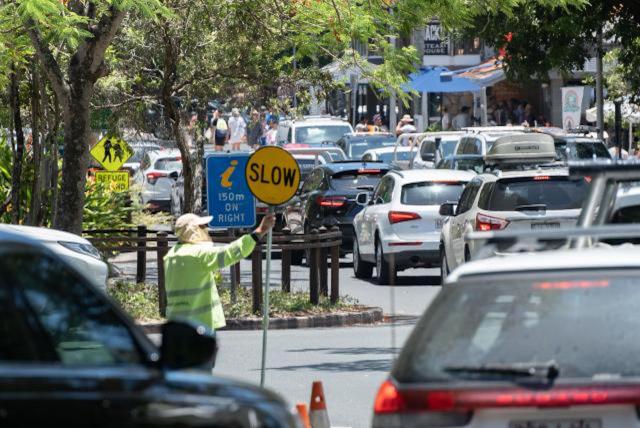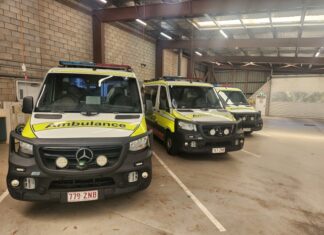Noosa Council’s Transport strategy 2017-2027 was a great plan but without measurable outcomes, a clear action plan and insufficient funds it’s a failure of governance and impossible to progress, Zero Emissions Noosa (ZEN) members told Council on Monday before suggesting four key outcomes and ways to achieve them.
At Monday’s general meeting ZEN members Vivien Griffin, Anne Kennedy and Jennifer Clement delivered a deputation on Council’s 10-year transport policy and the challenges in achieving it.
Ms Griffin said the transport policy 2017-2027 had eight principles and 15 desired outcomes which all identified the right direction for what the council set out to do.
“Number 1 desired outcome – residents of Noosa Shire are able to go about their everyday business without being reliant on private vehicles,” she said.
The other key policy transport document – Noosa cycling and walking strategy and implementation plan 2020-2040 – lists 369 projects, 118 in the hinterland and 251 on the coast, and a thorough analysis of walking and cycling needs in Noosa, she said.
“That is not responding to tourism it’s about responding to Noosa families, everyday people. It clearly needs a focus to be delivered for the benefit for residents across the shire not just the tourism hotspots,” Ms Griffin said.
Setting out the funding situation Ms Griffin said the transport levy charges $30 per ratepayer and per business, raising $930,000 per year.
Go Noosa costs $1.017m so more than the transport levy is raising and primarily for the free buses.
The cycle path annual infrastructure commitment is $1.45m per year.
“Really we have to ask that serious question, can councillors really say $1.45m is going to be enough to deliver those 118 hinterland and 251 coastal pathway projects in what I see as an unrealistic target by 2040,” she said.
“We think there’s too little funding to deliver real change.
“And arguably Noosa is going backwards in meeting current and future population pressures both within and from external pressures.”
With the major focus using those limited resources on reducing tourism congestion very little is being delivered for local benefit for local resident meeting their daily transport needs, she said.
“We think the combination of those factors means Noosa’s reputation as a unique and liveable community is at risk for the future.
“So we’ve identified four key desired outcomes.”
Anne Kennedy told councillors: “as Noosa residents we think we are missing out on walking and cycling infrastructure in particular”.
“We pay the levy, but we get very little benefit from the levy. Most benefits the tourists, is that fair?” she asked.
“It’s now 2025 only two years to go to 2027 when the transport strategy is to be implemented.
“Noosa needs to be bold like Paris and Brussels and other cities and towns that reduce dependence on cars, increase public transport systems and encourage alternative transport.”
Ms Kennedy said in 2032 when Olympic visitors arrive they want them to have a “truly Noosa experience”.
“We’re looking for something like big, bold visions, like 50 per cent reduction in cars in villages to be replaced by e-bikes, scooters and people movers,” she said.
“We’re suggesting no cars in Hastings St, the spit, Park Road to the national park and people be moved from these key tourist destinations and locals as well in fun, people movers on a continuous loop, taking people from those parking nodes.
“This was first suggested in 1993.
“Smaller e-buses throughout the shire would be great and that’s the constant feedback we get at ZEN that communities want – an integrated public transport system across all villages in Noosa Shire and the incentive for people to reduce their car use by having continuous fun and public transport.”
ZEN put forward two suggestions for funding streams.
“Firstly paid car parking by non-residents. So opening the woods, for example, to paid parking would be introduced into the 2025 budget. If this was carried out for 10 years we’ve estimated about $40million dollars coming in for transport initiatives. After 10 years it would be returned to the community, after all it is a community space. Number plate recognition could be used so residents don’t have to pay. Should I be very daring and say trial paid parking in Hastings Street that could be extended later into other areas,” Ms Kennedy said.
“The other revenue source is differential transport for businesses. Businesses pay the same levy as households. If businesses paid a levy dependent on the number of employees they had or number of car parks that would help deliver another revenue stream.
“Incentives for businesses that have solar, bike charges could be put in place to encourage businesses to reduce the levy they have to pay and other benefits you get from having those measures in place.”
Jenny Clement ended the deputation by saying ZEN’s future plans included setting up an e-bike library for residents to encourage the use of more alternate transport and holding a series of community consultations over the next six months to talk about their vision of priorities in the transport action plan.







